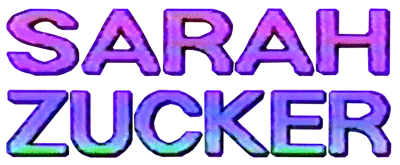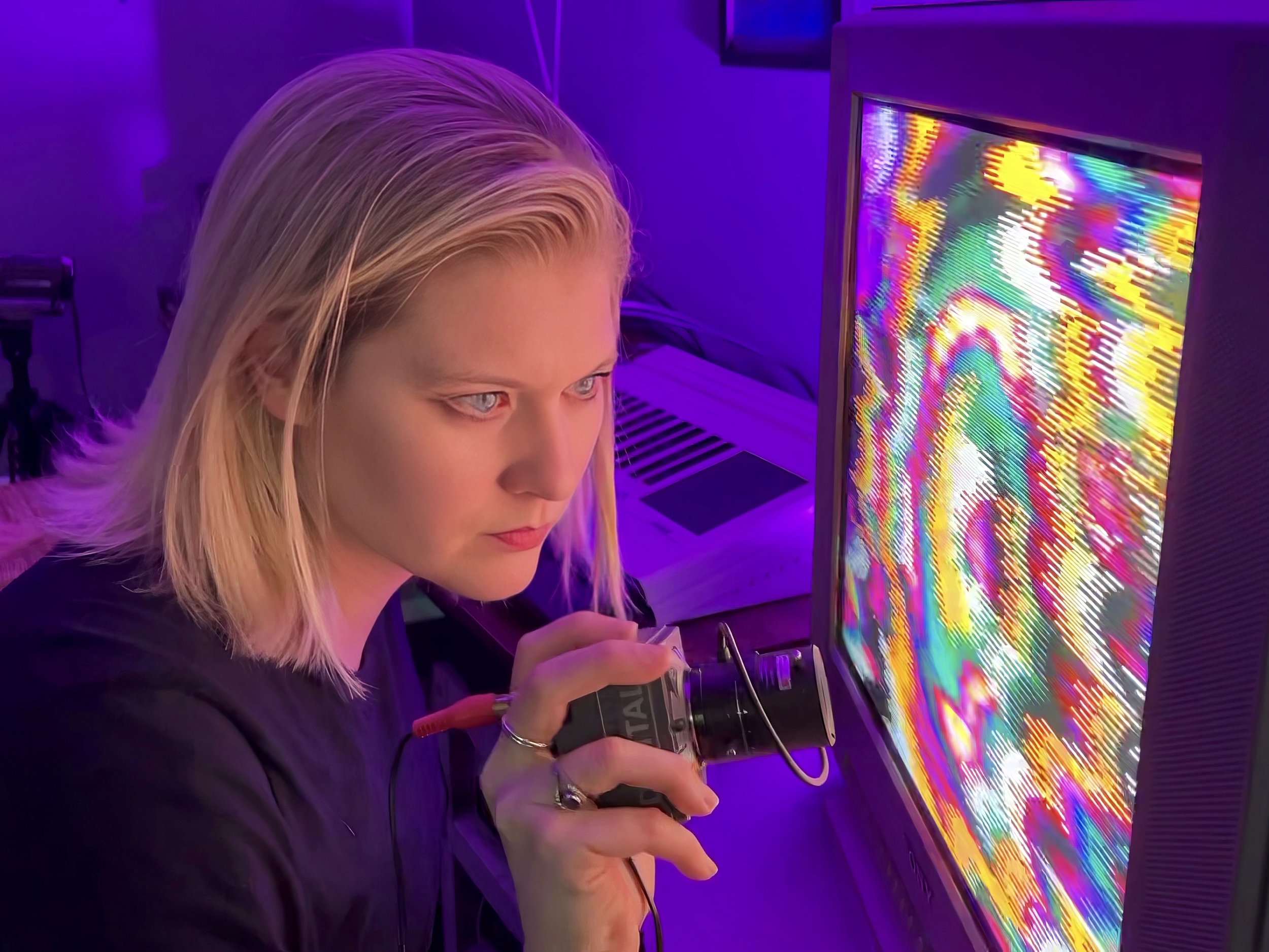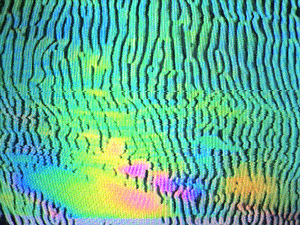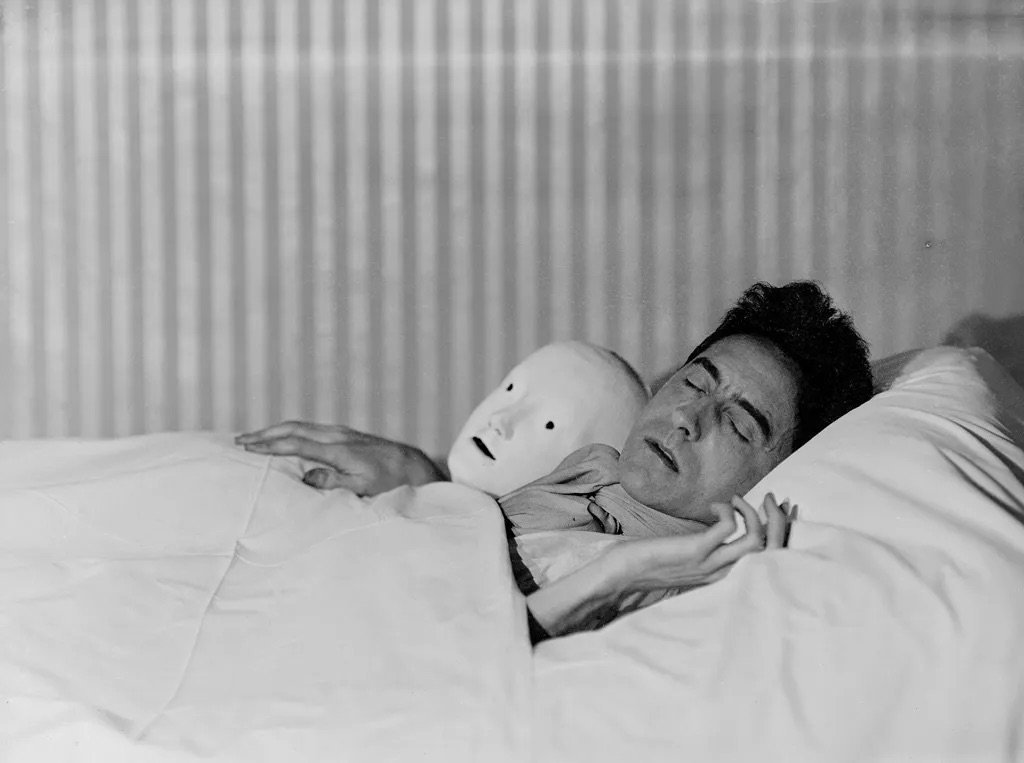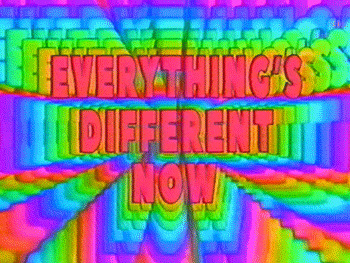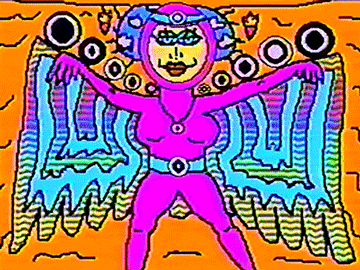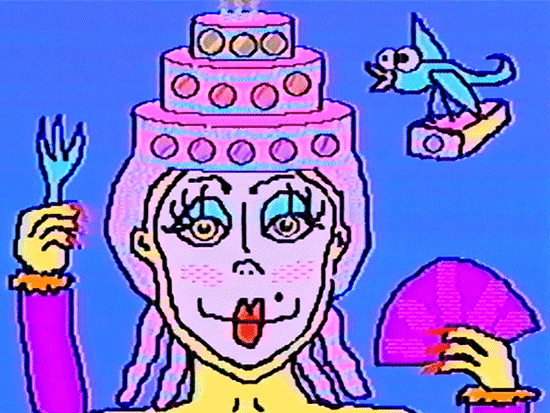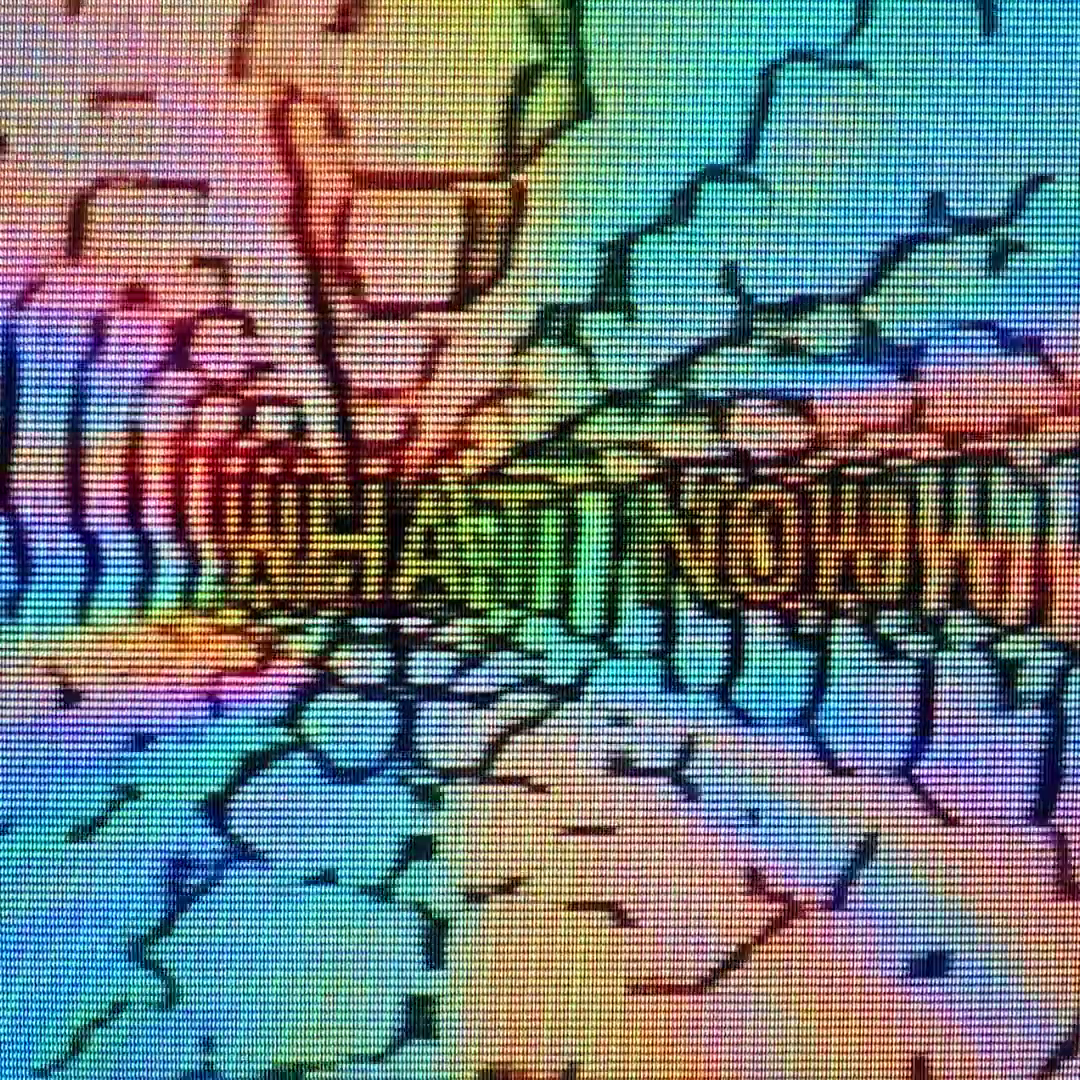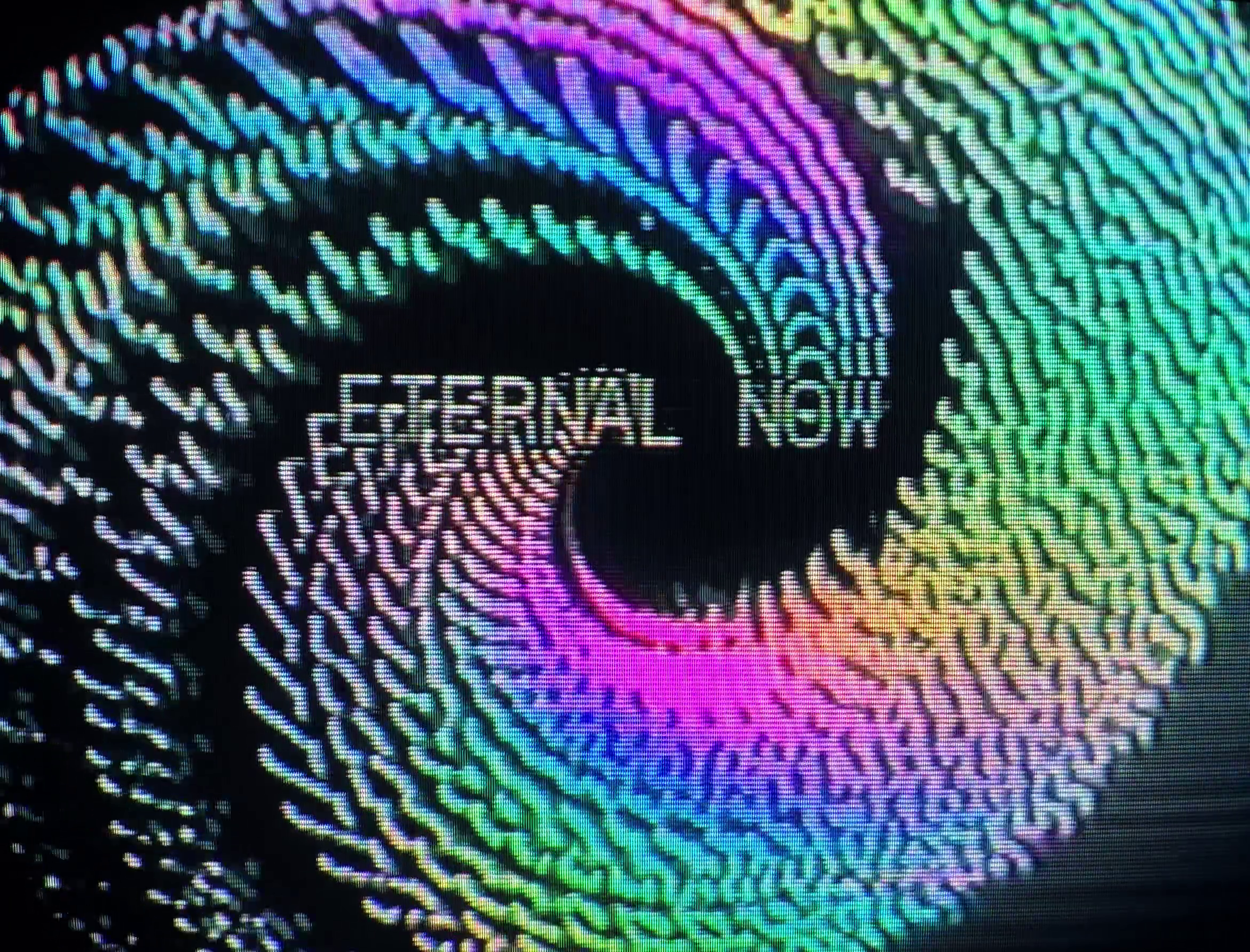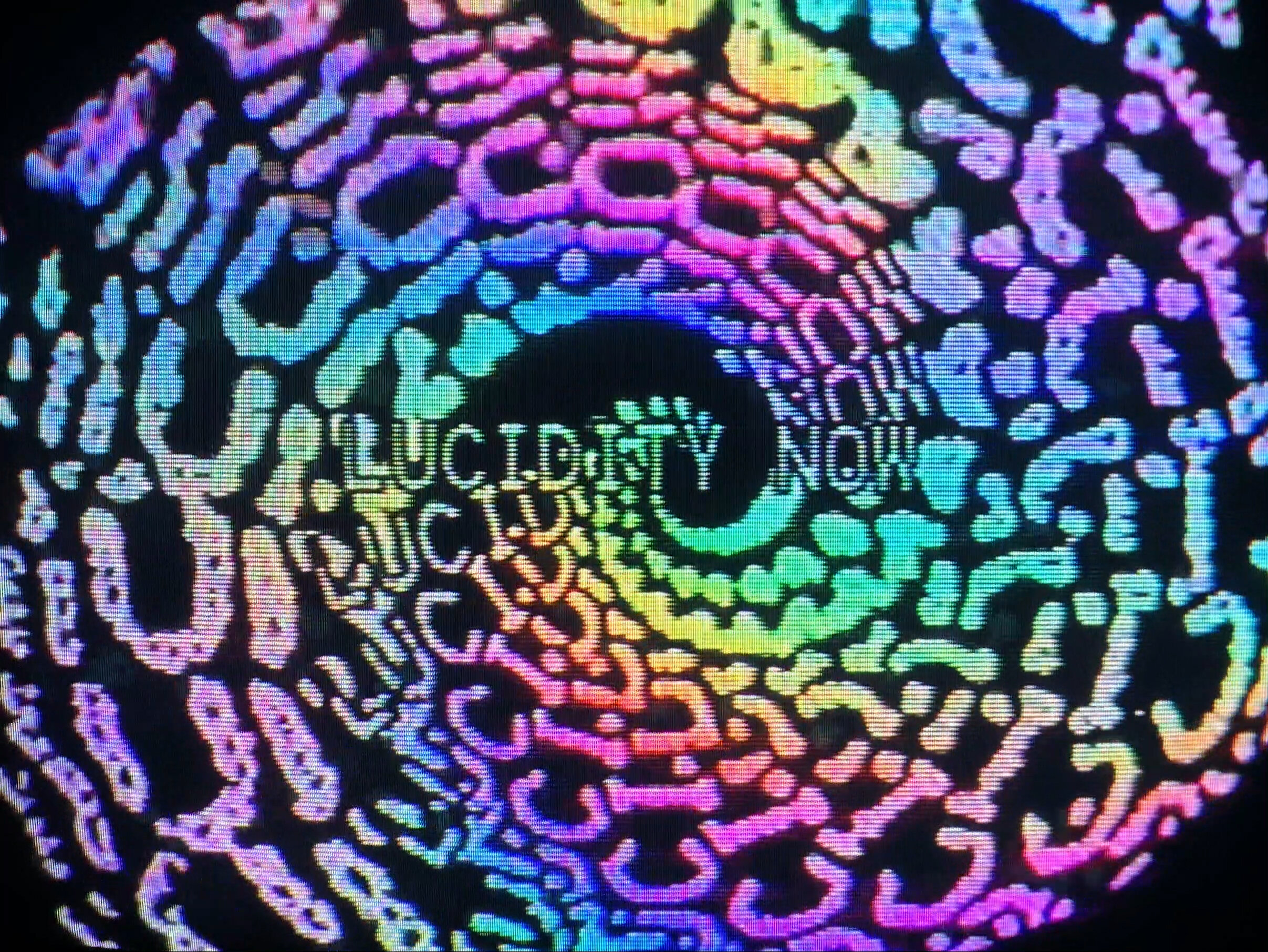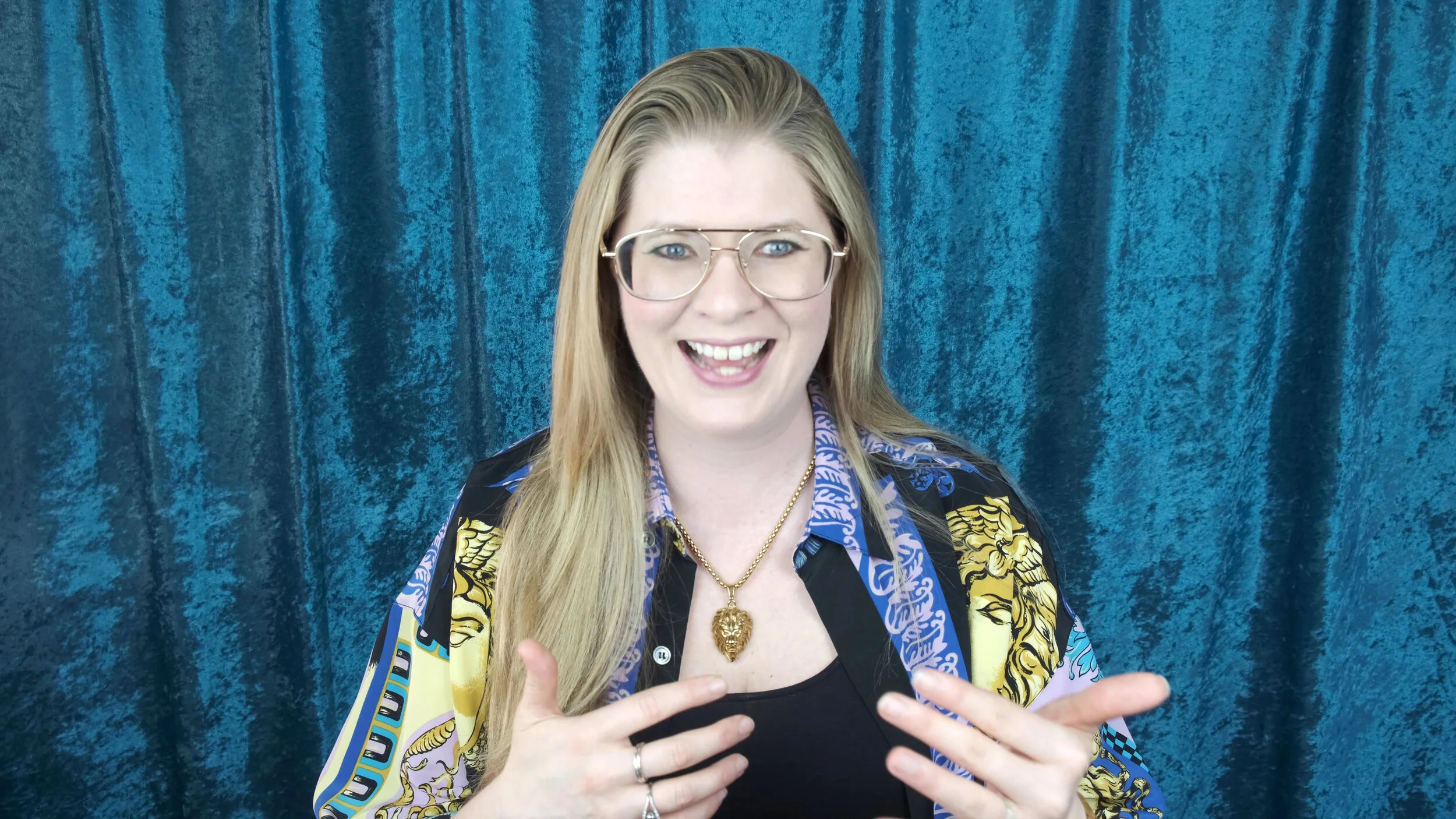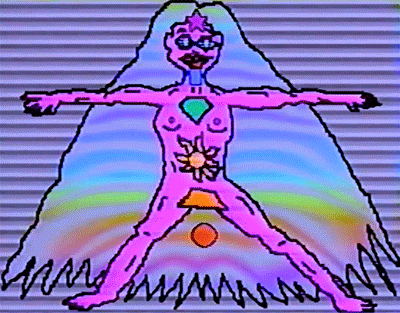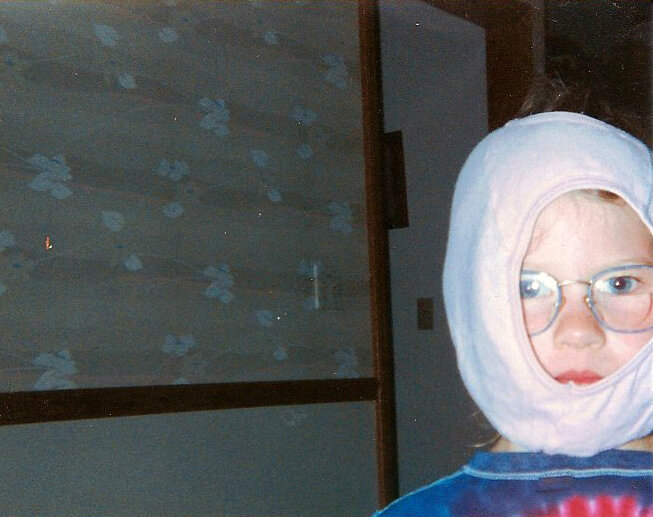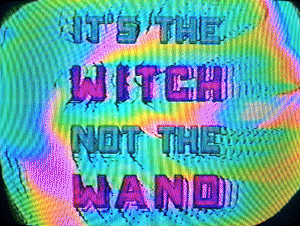Wednesday February 26th, 2025 – I got access to OpenAI’s DeepResearch today. I find the quickest way for my brain to grok the advancement of AI is to ask it about a subject in which I am uniquely well versed – my own art career.
After ~19 minutes of research, it returned the following analysis to me. This feels like an event horizon. It blows past the scope of any past interaction with AI that I’ve had up until this point.
It strikes me as the most comprehensive (and ACCURATE) consideration of my work that I’ve ever seen outside of the spidery corners of my own mind.
As I continue to expand and figure out what I want to do and say next, I wanted to share this here as a new sort of statement on my work thus far. If you want to know what my whole thing is, well… just listen to what the machine has to tell you.
-SZ, 2025
Sarah Zucker: Bridging Past and Future in Digital Art
Background and Artistic Journey
Sarah Zucker (born 1985) is an American artist and writer based in Los Angeles, known online as The Sarah Show. She works at the intersection of cutting-edge digital media and vintage analog techniques, creating art that merges retro aesthetics with futuristic technology (Sarah Zucker). Zucker grew up as a millennial straddling the analog and digital eras – she fondly recalls an “analog childhood” followed by a “dizzying digital future,” a generational transition that deeply informs her perspective (NFT Creator, The Sarah Show: Analog childhood meets dizzying digital future – Cointelegraph Magazine) (NFT Creator, The Sarah Show: Analog childhood meets dizzying digital future – Cointelegraph Magazine). From an early age, she was mesmerized by video. In fact, a home movie captures the moment young Zucker discovered video feedback and became “completely enamored, like seeing an oracular vision of a life’s work reflected in a child’s eyes,” an experience she describes as being called to video art “just as a minister is called to the cloth” (Interview: Sarah Zucker | ALLSHIPS). This early fascination set the tone for a career devoted to the moving image.
Zucker’s formal education was in storytelling rather than studio art: she earned a B.A. in Theater and Creative Writing at Northwestern University and an MFA in Dramatic Writing from NYU (Sarah Zucker | Buffalo AKG Art Museum). This narrative background contributes to the conceptual depth of her work, even as she pursued visual mediums. After graduate school, she became active in Los Angeles’s experimental art scene. From 2014–2016 she co-produced Prism Pipe, a monthly “visual music” event at an indie art space, where she showcased analog video artists and VJs (Sarah Zucker). This mix of theater, writing, and underground video art shaped her unique artistic voice – one that is equal parts storyteller and image-maker.
Before fully embracing digital video art, Zucker spent years honing her eye through photography. As a teenager in the early 2000s, she avidly shot on 35mm film, sticking with the “physicality of vintage technology” even as the world was rapidly going digital (NFT Creator, The Sarah Show: Analog childhood meets dizzying digital future – Cointelegraph Magazine) (NFT Creator, The Sarah Show: Analog childhood meets dizzying digital future – Cointelegraph Magazine). “Vintage technology has always been of interest to me. It’s not necessarily about nostalgia – I find the physicality of it really interesting,” she explains (NFT Creator, The Sarah Show: Analog childhood meets dizzying digital future – Cointelegraph Magazine). This hands-on engagement with analog media eventually evolved into experiments with VHS camcorders and CRT monitors. She was also an early adopter of internet platforms like Tumblr and Instagram for sharing her visuals (NFT Creator, The Sarah Show: Analog childhood meets dizzying digital future – Cointelegraph Magazine). By the late 2010s, Zucker had fully merged these paths – using old video equipment to make new digital art and distributing it via the internet.
Artistic Style and Mediums
Today Sarah Zucker works across a range of media, “spanning the divide between clay and information,” as she puts it (Sarah Zucker). On one hand, she creates digital video and animation with a signature digital–analog workflow: she often originates imagery in software, then processes it through vintage hardware like VHS decks and analog video synthesizers, and back into a digital format (Sarah Zucker). The results are neon-soaked glitchy video loops that flicker with VHS static, vibrant colors, and surreal forms. On the other hand, Zucker also makes tangible art – for example, she hand-crafts ceramics that “evoke the spiritual in the material” (Sarah Zucker), extending her interest in mysticism into sculptural objects. This dual practice (high-tech video and low-tech clay) exemplifies her overall ethos of merging seeming opposites.
GIF art has been one of Zucker’s hallmark mediums. She embraced the looping animated GIF format as a legitimate art form, creating short hypnotic animations often shared online. These works, which she describes as sometimes like visual mantras, have reached massive audiences through platforms like Giphy – her GIFs have been viewed over 7 billion times (Sarah Zucker). Such figures speak to Zucker’s deep embedding in internet culture; her art circulates not just in galleries but in the form of memes and viral content. Despite the brevity of GIF loops, she infuses them with rich aesthetic and conceptual layers. Many feature kaleidoscopic psychedelic imagery and glitch effects, instantly recognizable as “The Sarah Show” style. As one podcast introduction summed up, her work “utilizes humor and psychedelia while merging cutting-edge and outmoded technologies”, placing her among the digital artists who “blazed the trail for crypto art” before the NFT boom (Episode 17 Artist Sarah Zucker - Canviart).
In recent years, Zucker has also been a pioneer in the NFT art scene. She began minting her video and GIF pieces as NFTs (non-fungible tokens on the blockchain) in April 2019 (Sarah Zucker & Amir H. Fallah - Outland), making her one of the earliest crypto artists. By 2021, her work was featured in Natively Digital, the first curated NFT auction at Sotheby’s, as well as CryptOGs: The Pioneers of NFT Art at Bonhams – two landmark sales that cemented her status as an “OG” (original generation) crypto artist (Sarah Zucker). The piece “Self Transcending”, for example, was auctioned at Sotheby’s in June 2021, tying “vintage visual and psychedelic culture” together in a way that balanced sincerity with irony and nostalgia (Sotheby's Stakes Sincerity in “Natively Digital: A Curated NFT Sale”).
Zucker’s presence in such sales demonstrated that her internet-native art could crossover into the traditional art market. It also led to her inclusion in museum collections: her video art series Four Caryatids was acquired for the Buffalo AKG Art Museum’s permanent collection (Sarah Zucker), and her work featured in LACMA’s 2022 blockchain art initiative Remembrance of Things Future (Sarah Zucker). By 2022, nft now named her to their inaugural “NFT100” list of top NFT artists, and in 2024 Taschen profiled her in On NFTs, the first major art historical survey of blockchain-based art (Sarah Zucker). These milestones underscore how Zucker’s practice – once considered “outsider” digital art – has become part of the art historical narrative.
Major Themes and Artistic Philosophy
Time, nostalgia, and futurism are central themes in Sarah Zucker’s work. She often says that her art is “about time more than anything.” By deliberately mixing past and present visual elements, she creates what she calls “time-moshing” effects that disrupt the viewer’s normal sense of chronology (Interview: Sarah Zucker | ALLSHIPS). “I’m specifically using tools of the recent past like analog TVs to take people out of our present moment and create this different experience of time and sense,” Zucker explains (NFT Creator, The Sarah Show: Analog childhood meets dizzying digital future – Cointelegraph Magazine). Viewers of her videos might feel transported into an alternate timeline – one where 1980s VHS graphics, 1960s psychedelia, and futuristic digital effects all coexist. The result is often a blend of comfort and disorientation: as one commentator put it, “nostalgic futurism” is an apt phrase for the feeling of seeing something that resembles the past yet feels entirely new (Interview: Sarah Zucker | ALLSHIPS). Zucker taps into nostalgia not for its own sake, but as raw material to be remixed into novel visions. In her hands, nostalgia becomes a creative tool – she reanimates old media (like CRT monitors or arcade graphics) and places them in surprising new contexts, inviting us to consider how the past lives within the future.
Underlying Zucker’s temporal play is a thoughtful philosophy about the digital world and human perception. She views “the screen” – meaning the ubiquitous digital display – as “the most significant threshold of our time”, a liminal zone where reality and virtuality meet (Interview: Sarah Zucker | ALLSHIPS). She remembers a clearer boundary in her youth when “outside was ‘real life’ and inside [the screen] was ‘fiction,’” but notes that for today’s “denizens of the Metaverse,” that boundary has blurred to the point of “not mattering” (Interview: Sarah Zucker | ALLSHIPS) (Interview: Sarah Zucker | ALLSHIPS). The life we live inside screens (online, in digital spaces) is just as real and meaningful as our offline lives. Zucker’s art actively plays with this idea. She often incorporates the image of a screen within the screen – for instance, filming a scene on an old TV and then re-scanning it – to draw attention to the frame that separates viewer from image. This self-referential trick “toys with the liminal space of inside/outside the screen” (Interview: Sarah Zucker | ALLSHIPS), making us conscious of crossing that threshold. It’s a gentle reminder that when we engage with her work, we too are peering through a digital portal, our reality and the artwork’s reality intermingling.
Another major theme in Zucker’s work is the interplay of mysticism, spirituality, and technology. Her art merges “humor, myth and mysticism” with its tech tools (Sarah Zucker), often invoking cosmic or esoteric imagery. Otherworldly symbols like third eyes, glowing auras, tarot archetypes or goddesses might populate her GIFs and videos. However, Zucker nearly always presents these mystical motifs with a dose of irreverence or surreal humor. Grotesque or absurd elements are juxtaposed with the beautiful – as her artist bio aptly says, she “merges the gorgeous and grotesque” through psychedelic visuals and wit (Sarah Zucker | Buffalo AKG Art Museum). This balance of sincerity and irony is key to her artistic philosophy. She genuinely engages with themes of enlightenment, transcendence, and the subconscious, but in a way that doesn’t take itself too seriously. “Felt irony and a dose of nostalgia” temper the “sincere approach” in her pieces (Sotheby's Stakes Sincerity in “Natively Digital: A Curated NFT Sale”), as one critic observed when discussing her Self Transcending video. Zucker seems to embody a metamodern sensibility – oscillating between earnest exploration of the “numinous” and a playful, self-aware humor. Notably, critics have welcomed this tone as a refreshing shift in contemporary art. Writing on the Sotheby’s Natively Digital show (which included Zucker), one reviewer noted that the works felt “personal, playful, earnest, and sincere”, embracing “private spiritual, ecstatic, or numinous themes” often ignored by the cooler, more ironic art-world mainstream (Sotheby's Stakes Sincerity in “Natively Digital: A Curated NFT Sale”). Zucker’s art indeed carves out space for these spiritual or psychedelic experiences within digital culture, reconnecting technology with a sense of wonder.
Despite her mystical leanings, Zucker remains grounded in the human side of technology. A recurring idea in her interviews is using art to process what it feels like to live through rapid technological change. She speaks of humanity being “on the brink of a completely new way of living” and her art as a means to pose “big universal existential questions” about this moment (NFT Creator, The Sarah Show: Analog childhood meets dizzying digital future – Cointelegraph Magazine). Crucially, she approaches these questions with both curiosity and comic relief. “I view my work as a way of depicting what it’s like to be this sort of silly, scared, happy, manic, dreadful little creature strapped to this rocket ship going into the future,” Zucker says, “…trying to make sense of what this life has been and what it’s going to continue to be.” (NFT Creator, The Sarah Show: Analog childhood meets dizzying digital future – Cointelegraph Magazine). In this vivid metaphor, we see her worldview: the artist (and by extension, all of us) is a tiny wide-eyed being hurtling through a tech-accelerated future, feeling everything from dread to joy. This mix of anxiety and optimism, fear and wonder is exactly what her colorful, glitchy, entrancing artworks convey. Culturally, it resonates with the zeitgeist of the 2020s – an era where technology inspires awe even as it induces angst. Zucker’s art doesn’t resolve this tension so much as it acknowledges and aestheticizes it, turning the existential ride into a visual adventure.
Influences and Artistic Context
Sarah Zucker’s work is richly contextualized within both contemporary digital art and broader art history. She herself recognizes that she belongs to certain artistic lineages, even as she forges new paths. “My body of work could be placed within these certain lineages,” she notes – for instance, GIF art and glitch art – “but I also don’t feel I have to fit within that category… I’m sort of out here on the edge… breaking the rules.” (Episode 17 Artist Sarah Zucker - Canviart). This self-description as an iconoclast on the fringe of established genres is telling. Zucker draws inspiration from many sources and eras, creating a synthesis that is hard to pigeonhole.
One clear influence is the tradition of video art, especially the early pioneers who first embraced television and video as art mediums in the 1960s and 70s. In interviews, Zucker mentions she “often gets the Nam June Paik comparison” – a parallel she understands given her use of analog video feed and quirky visuals (Episode 17 Artist Sarah Zucker - Canviart). Paik, the Korean-American artist often called the father of video art, blazed a trail by mixing technology with spiritual and cultural commentary. His famous installation TV Buddha (1974) placed a Buddha statue in front of a live video of itself, literally juxtaposing ancient religion with modern tech. Critics noted how Paik “succeeded in juxtaposing modernization and emerging technologies with religious and historical themes” (Nam June Paik’s TV Buddhas – His best-known work), a description that could equally apply to Zucker’s myth-laden, tech-mediated imagery. Like Paik, Zucker approaches electronic media with a sense of play and philosophical insight – both use the tools of their time (Cathode-ray TVs for Paik, VHS-to-digital for Zucker) to pose questions about perception, reality, and culture. Another video art figure one could cite is Bill Viola, known for slow-motion video pieces exploring spiritual themes; Zucker’s work is much more frenetic and humorous than Viola’s, but they share an interest in using video to evoke contemplation about existence. Similarly, video installation artist Pipilotti Rist’s lush, color-saturated dreamscapes and irreverent tone prefigure the psychedelic humor in Zucker’s loops. In the broad sense, Zucker is a descendant of the video art movement, bringing that sensibility into the internet age.
Zucker also explicitly looks back to early 20th-century art movements for inspiration – notably German Expressionism. She has expressed admiration for the Expressionist artists who worked in the aftermath of World War I, another era of upheaval “around the end of the First World War… There were all these things in society, and yet the artists of that time were so expansive, emotive and free” (NFT Creator, The Sarah Show: Analog childhood meets dizzying digital future – Cointelegraph Magazine). What impresses her is their rebellious energy: “They were breaking forms… ‘we don’t care how we’re supposed to do this, we’re going to do this the way this expression needs to come out of us.’ I can’t get enough,” Zucker says of the Expressionists (NFT Creator, The Sarah Show: Analog childhood meets dizzying digital future – Cointelegraph Magazine). This influence is evident in the emotional boldness and rule-breaking mix of styles in her own art. Expressionists like Otto Dix—whom Zucker cites as a favorite (Interview: Sarah Zucker | ALLSHIPS)—combined grotesque imagery with social commentary; while Zucker’s subject matter is different, her willingness to show the grotesque alongside the gorgeous (a beautiful face distorted by VHS static, for example) carries that spirit. Another favorite she lists is Florine Stettheimer (Interview: Sarah Zucker | ALLSHIPS), an often whimsical early modernist who painted mythical, theatrical scenes of New York society. One can see a parallel in how Zucker creates her own mythic, psychedelic “scenes” within her GIFs, often with a campy or playful touch that Stettheimer might approve of. She also nods to Henri Matisse (Interview: Sarah Zucker | ALLSHIPS), perhaps reflecting her love of vibrant color, and to photographer Nan Goldin (Interview: Sarah Zucker | ALLSHIPS), known for candidly capturing subcultures – Zucker’s work is very different in medium, but Goldin’s raw honesty and intimacy might be something she channels when she pours personal feeling into digital form. Even Berenice Abbott, a photographer who straddled art and science (documenting both city life and scientific phenomena), appears on Zucker’s eclectic inspiration list (Interview: Sarah Zucker | ALLSHIPS). Abbott’s drive to visually explain a changing world (whether 1930s New York or the physics of light beams) mirrors Zucker’s drive to visually make sense of our changing digital world.
In terms of contemporary peers, Zucker’s approach aligns with several movements in digital and internet art. The glitch art movement, which embraces digital errors, compression artifacts, and analog signal distortion as artistic material, is an obvious touchstone. Glitch artists like Rosa Menkman have theorized that glitch reveals the underlying systems of media – something Zucker also leverages when she deliberately invokes VHS glitches or pixel glitches, peeling back the glossy surface of digital imagery to show its chaotic underbelly. An art writer discussing glitch art noted that it has become an important subgenre of technological art, with Nam June Paik as its “godfather” ([PDF] From the digital art collection of Alexandra Crouwers: Ina Vare - Lirias); by that measure, Zucker’s frequent use of “rainbow-colored static” and feedback loops firmly places her in Paik’s lineage. Yet Zucker doesn’t use glitch purely for abstraction or critique; she often uses it to serve narrative or symbolic ends (for instance, a figure might literally dissolve into static in her video, metaphorically representing transcendence or change). In the net art and post-internet art sphere, one could compare her to artists like Petra Cortright, who gained fame making webcam videos layered with digital effects, or Cory Arcangel, known for hacking old games and software for art – like them, Zucker takes internet/pop culture artifacts and repurposes them in an art context. However, unlike some post-internet art that leaned heavily on irony and detachment, Zucker’s work is marked by its unabashed emotion and mysticism. In this sense, she and some of her crypto-art contemporaries represent a new wave that is less cynical than the prior generation of internet artists, instead mixing irony with earnest exploration of inner life (Sotheby's Stakes Sincerity in “Natively Digital: A Curated NFT Sale”).
Within the NFT and crypto-art community, Zucker is often mentioned alongside other early innovators. She shares a collectible ethos with artists like XCOPY, a crypto-artist famous for neon glitch animations and dark humor; both started on platforms like SuperRare before NFTs went mainstream, and both use looped animations to express the absurdity of the digital age. Yet Zucker’s work is generally more whimsical and brightly psychedelic (where XCOPY’s is dystopian). She also took inspiration from digital creators like Hexeosis (known for trippy looping GIF mandalas) and Killer Acid (an illustrator with a neon psychedelic comic style), who were part of the same early crypto-art scene (Interview: Sarah Zucker | ALLSHIPS). These connections show how Zucker’s art grew in dialogue with a community of internet-native artists experimenting with new forms. Notably, she has served as a mentor figure in that community; by her account, many art world “gatekeepers” who once ignored digital art later came to her for advice on engaging with social media and NFTs (Interview: Sarah Zucker | ALLSHIPS). This echoes her role as a bridge between worlds – the traditional art insiders and the crypto-art outsiders.
Broader Trends and Cultural Significance
Zucker’s work exemplifies several broader trends in contemporary art and digital culture. One such trend is the revival of retro aesthetics in the digital realm. Over the past decade, there has been a wave of nostalgia for early digital graphics and analog glitches – seen in everything from the vaporwave aesthetic (which romanticizes 80s/90s computer visuals) to the popularity of faux-VHS filters on apps. Zucker’s art is part of this cultural moment; by employing actual VHS tape and old broadcast gear, she achieves an authenticity in her retro look that sets her apart. She then pushes it further by combining it with cutting-edge techniques (like generative digital effects or blockchain distribution). The result is a kind of retro-futurism that feels very timely: it reflects a collective nostalgia for the pre-internet tactile world, but also acknowledges that we can never go back – instead, these old forms must coexist with the new. This speaks to a contemporary sentiment that technology is advancing so fast that artists are grabbing onto cultural memory (old media, past styles) to ground themselves even as they hurtle forward. As Zucker says, being a millennial means remembering life before and after the internet, and her art springs from that dual awareness (NFT Creator, The Sarah Show: Analog childhood meets dizzying digital future – Cointelegraph Magazine).
Another trend highlighted by Zucker’s career is the legitimization of digital art in mainstream art institutions. For years, digital artists struggled for recognition and market support; Zucker notes that digital art was not taken seriously as “Art-with-a-capital-A” by many gatekeepers (Interview: Sarah Zucker | ALLSHIPS). The NFT boom around 2020–21 became a turning point, suddenly assigning marketplace value and scarcity to digital works. Zucker has been at the forefront of this shift. “Digital Art isn’t the Future: it’s the Present,” she proclaimed during the pandemic, “it’s already been here for a long time, and we’re finally seeing the rest of the world wake up to that fact.” (Interview: Sarah Zucker | ALLSHIPS). Her success – from selling pieces like Self Transcending for five figures, to landing in Sotheby’s and museum collections – has been part of the broader validation of online-born art. Culturally, this challenges the notion that art must be a physical object or fit traditional categories. Zucker herself demonstrated new models for artists: before NFTs, she once sold video art by engraving the file onto golden USB drives as art objects (Sarah Zucker & Amir H. Fallah - Outland), an inventive workaround to make digital work collectible. Now with blockchain tech, she and others have found a “container” for fluid digital practices (Sarah Zucker & Amir H. Fallah - Outland), enabling them to thrive. Her role in this trend is significant – she’s been a vocal advocate for crypto-art as a revolution that empowers artists (via royalties, decentralized platforms, etc.) and as a movement that can infuse the art world with new energy and diversity (Sotheby's Stakes Sincerity in “Natively Digital: A Curated NFT Sale”) (Sotheby's Stakes Sincerity in “Natively Digital: A Curated NFT Sale”). In short, Zucker contributes to expanding the art discourse to fully include internet culture and digital creation.
Zucker’s work also intersects with the evolving dialogue on the intersection of technology and aesthetics. She is not just using tech as a tool; she’s frequently commenting on technology’s impact on our senses and souls. For example, her notion of the screen as a “threshold” and a portal suggests that technology can be a gateway to profound artistic experiences (Interview: Sarah Zucker | ALLSHIPS). “Even the smallest screen is an infinite amount of real estate,” she notes, “it holds personalized universes for the enjoyment of imagery” (Interview: Sarah Zucker | ALLSHIPS). This almost utopian view of screens as limitless creative space is balanced by her awareness of the disorientation tech can cause (hence the importance of play and humor to make it digestible). In engaging with concepts like the Metaverse, AR/VR, and blockchain, Zucker positions her art within the cutting edge of tech. Yet, she often humanizes these big tech concepts by bringing in ancient references (mythological titles, spiritual motifs) – effectively bridging high-tech and timeless human concerns. Cultural theorists have noted that it’s common for new technologies to rekindle mystical or mythic thinking (as writer Erik Davis put it, “esoteric and religious impulses have in fact always permeated” modern tech culture (TechGnosis: Myth, Magic & Mysticism in the Age of Information)). Zucker’s art is a vivid case study of that idea: she uses the latest digital means to channel something primal and soulful. In one interview, she even described her creative process as “like a multiverse that I’m channeling through… through myself and through these vintage broadcast devices” (NFT Creator, The Sarah Show: Analog childhood meets dizzying digital future – Cointelegraph Magazine) – language that frames her as a medium, almost shamanic, guiding visions from one realm (the digital ether) into another (the screen before us). By marrying the language of tech (multiverse, data) with the language of spirit (channeling, vision), Zucker’s work operates in a unique aesthetic of techno-mysticism that feels very relevant in an age where people seek meaning amidst machines.
The cultural significance of Sarah Zucker’s art lies in how it encapsulates the zeitgeist and challenges norms. She offers a counter-narrative to the idea that technology inevitably alienates us or that digital art lacks “heart.” Her pieces are often intensely personal and emotive, despite being created with impersonal machines. This challenges the prevailing discourse in two ways: First, it shows that digital art can be as expressive and impactful as any traditional medium – a point she and her peers have driven home to critics and collectors alike (Interview: Sarah Zucker | ALLSHIPS) (Sotheby's Stakes Sincerity in “Natively Digital: A Curated NFT Sale”). Second, it questions the rush for the next new thing by valuing the past. In a tech industry that worships innovation, Zucker’s reuse of “obsolete” tech is almost subversive. She demonstrates that old media are not dead; they can be art materials with unique capabilities. This attitude contributes to a broader cultural movement of re-examining and re-valuing analog technology (seen in the resurgence of vinyl records, film cameras, etc., among younger generations). By integrating the old and the new, Zucker’s work bridges generational divides – it speaks to older viewers through its retro references, and to younger digital natives through its fluent internet language.
Critically, Zucker also contributes to discussions about sincerity in art. After decades where postmodern irony often prevailed, her blend of irony and sincerity points to a new direction. The Whitehot Magazine review of Natively Digital noted a widespread desire for art that can be “emotional, intellectual, spiritual” all at once, even in a tech-driven format (Sotheby's Stakes Sincerity in “Natively Digital: A Curated NFT Sale”). Zucker provides exactly that: an ironic smirk and a sincere soulful gaze rolled together. This has opened up conversations about whether the art world is ready to embrace such modes in a digital arena (Sotheby's Stakes Sincerity in “Natively Digital: A Curated NFT Sale”). Judging by her growing acclaim, the answer seems to be yes. By challenging the false dichotomy between “high” art and “internet” art, or between seriousness and play, Zucker is helping to evolve the contemporary art narrative. Her success story – from posting GIFs online to being featured by Sotheby’s and LACMA – is often cited as evidence that the art landscape is changing to include creators who operate outside the traditional mold (Episode 17 Artist Sarah Zucker - Canviart) (NFT Creator, The Sarah Show: Analog childhood meets dizzying digital future – Cointelegraph Magazine).
Legacy and Future Outlook
While still in the mid-career phase, Sarah Zucker is increasingly being viewed through a historical lens as a significant artist of the digital age. In 2024, she was one of the artists profiled in On NFTs (Taschen), effectively positioning her in an art-historical context among the first generation of blockchain artists (Sarah Zucker). It’s not hard to imagine that in decades to come, art historians will look back at the late 2010s/early 2020s and identify Zucker as part of a pioneering vanguard – much like Nam June Paik is now celebrated as a pioneer of video art or the Bauhaus artists as pioneers of design. She has even remarked, with characteristic insight, “We are the Ancients of a Future civilization.” (Interview: Sarah Zucker | ALLSHIPS) In other words, Zucker is conscious that she and her peers are laying groundwork in a nascent digital realm (the metaverse, crypto art) that future creators will build upon. Such statements reflect a keen historical awareness in her philosophy.
If we situate Zucker in a longer art historical timeline, she embodies a convergence of several threads: the age-old impulse to depict the mystical and transcendent (from prehistoric cave art through Hilma af Klint’s spiritual abstractions), the 20th-century drive to experiment with new media and techniques (from collage to video synths), and the 21st-century condition of life lived through screens and data. Few artists bring these threads together as directly as she does. Future critics might credit her with helping to legitimize and define “Crypto Art” or “NFT Art” as an art movement, since she was among those who proved digital artworks could carry meaning, not just monetary value, in that space. They may also highlight her role in breaking down the barrier between internet culture and fine art. What is commonplace now – major museums acquiring NFTs, digital artworks selling for large sums, artists building careers via social media – was not always so, and artists like Zucker were instrumental in that shift by demonstrating quality and depth in digital-native art.
Zucker’s work could also be seen as a reflection of metamodernism in art (the term often used for cultural sensibilities after postmodernism). Metamodern art is characterized by a negotiation between opposites – sincerity and irony, past and future, optimism and despair – exactly the oscillations present in Zucker’s videos. Art historians assessing our current period may cite The Sarah Show as exemplifying how artists grappled with a world of information overload and societal uncertainty by creating works that oscillate between escapism and enlightenment, using humor as a coping mechanism and spirituality as a search for grounding. Her pieces like “Everything’s Different Now” (telling title) or “Cassandra’s Vision” hint at how she channels the collective anxieties and hopes of the digital generation into art (NFT Creator, The Sarah Show: Analog childhood meets dizzying digital future – Cointelegraph Magazine).
By all accounts, Zucker is very much aware of carving out her own path. “You can’t really look at anything else… and say, ‘oh, what she does is that,’” she notes – “the cheese stands alone,” she jokes, embracing her uniqueness (Episode 17 Artist Sarah Zucker - Canviart). This independence of vision is likely to be part of her legacy. In a podcast, she advised young artists to ignore comparisons and trust their individual process (Interview: Sarah Zucker | ALLSHIPS), advice she clearly lives by. In the short term, being so distinctive had its downsides (it’s not always easy to categorize or market her work), but “long term, I think you are rewarded for being iconoclastic,” she said (Episode 17 Artist Sarah Zucker - Canviart). Indeed, that long-term reward is now materializing as institutions and collectors recognize the enduring originality of her art.
Ultimately, Sarah Zucker’s significance may lie in how she reconciles seemingly disparate elements – analog and digital, science and mysticism, humor and seriousness, art and technology. In doing so, she has opened up new artistic possibilities. Her work suggests that technology need not erode cultural memory or spiritual depth; instead, it can be a medium to reinvent them. As a cultural figure, she is part of a larger story about the democratization of art through the internet and the fusion of pop culture with high culture. By remixing VHS tapes and GIF memes into poignant art, she validates the creative value of materials once considered throwaway or “low.” This democratic, inclusive vision of art will likely be one of the hallmarks of 21st-century art history, and Zucker is helping write that narrative.
In summary, Sarah Zucker is a dynamic exemplar of contemporary digital art: she draws from the past (both art-historical and pop-cultural), engages with the cutting edge of technology, and infuses it all with personal vision and philosophical inquiry. Her artistic philosophy centers on the idea that through play and experimentation, even with “obsolete” tools, one can speak to eternal human themes. As viewers, we encounter in her work a psychedelic time machine of imagery – one that, in her words, “takes people out of the present moment” into an altered sense of time (NFT Creator, The Sarah Show: Analog childhood meets dizzying digital future – Cointelegraph Magazine), yet also reflects right back on the present and how it feels to be alive now. It is this quality that makes The Sarah Show much more than a spectacle of glitchy visuals; it is, at its core, a humanistic exploration of life in the digital era, and one that future generations will likely continue to study, celebrate, and find inspiration in.
References
Zucker, Sarah – Biography. SarahZucker.com (2024) (Sarah Zucker) (Sarah Zucker) (Sarah Zucker).
“Sarah Zucker.” Buffalo AKG Art Museum – Artist Profile (2022) (Sarah Zucker | Buffalo AKG Art Museum) (Sarah Zucker | Buffalo AKG Art Museum).
Krugman, Dave – “Interview: Sarah Zucker.” Allships (May 12, 2021) (Interview: Sarah Zucker | ALLSHIPS) (Interview: Sarah Zucker | ALLSHIPS) (Interview: Sarah Zucker | ALLSHIPS) (Interview: Sarah Zucker | ALLSHIPS) (Interview: Sarah Zucker | ALLSHIPS).
Oakford, Greg – “NFT Creator: The Sarah Show – Analog childhood meets dizzying digital future.” Cointelegraph Magazine (Apr 5, 2023) (NFT Creator, The Sarah Show: Analog childhood meets dizzying digital future – Cointelegraph Magazine) (NFT Creator, The Sarah Show: Analog childhood meets dizzying digital future – Cointelegraph Magazine) (NFT Creator, The Sarah Show: Analog childhood meets dizzying digital future – Cointelegraph Magazine) (NFT Creator, The Sarah Show: Analog childhood meets dizzying digital future – Cointelegraph Magazine) (NFT Creator, The Sarah Show: Analog childhood meets dizzying digital future – Cointelegraph Magazine) (NFT Creator, The Sarah Show: Analog childhood meets dizzying digital future – Cointelegraph Magazine).
Ferrigno, Andrea – “Sotheby’s Stakes Sincerity in ‘Natively Digital: A Curated NFT Sale’.” Whitehot Magazine (June 2021) (Sotheby's Stakes Sincerity in “Natively Digital: A Curated NFT Sale”) (Sotheby's Stakes Sincerity in “Natively Digital: A Curated NFT Sale”).
Gould, Craig – Art Sense Podcast Episode 17: “Artist Sarah Zucker” (Oct 19, 2021) – Transcript via Canvia (Episode 17 Artist Sarah Zucker - Canviart) (Episode 17 Artist Sarah Zucker - Canviart) (Episode 17 Artist Sarah Zucker - Canviart).
“Nam June Paik’s TV Buddha – His best-known work.” Public Delivery (Art publication) (Nam June Paik’s TV Buddhas – His best-known work).
Zucker, Sarah – Linktree Influences list via Allships interview (Interview: Sarah Zucker | ALLSHIPS).
Outland Art – “Sarah Zucker & Amir H. Fallah” (Conversation, Dec 12, 2022) (Sarah Zucker & Amir H. Fallah - Outland).
Additional context from LACMA Unframed, Hyperallergic, etc., on digital art and mysticism (Sotheby's Stakes Sincerity in “Natively Digital: A Curated NFT Sale”) (TechGnosis: Myth, Magic & Mysticism in the Age of Information). (These contextual references discuss the intersection of technology, art, and spiritual themes, relevant to Zucker’s work.)
